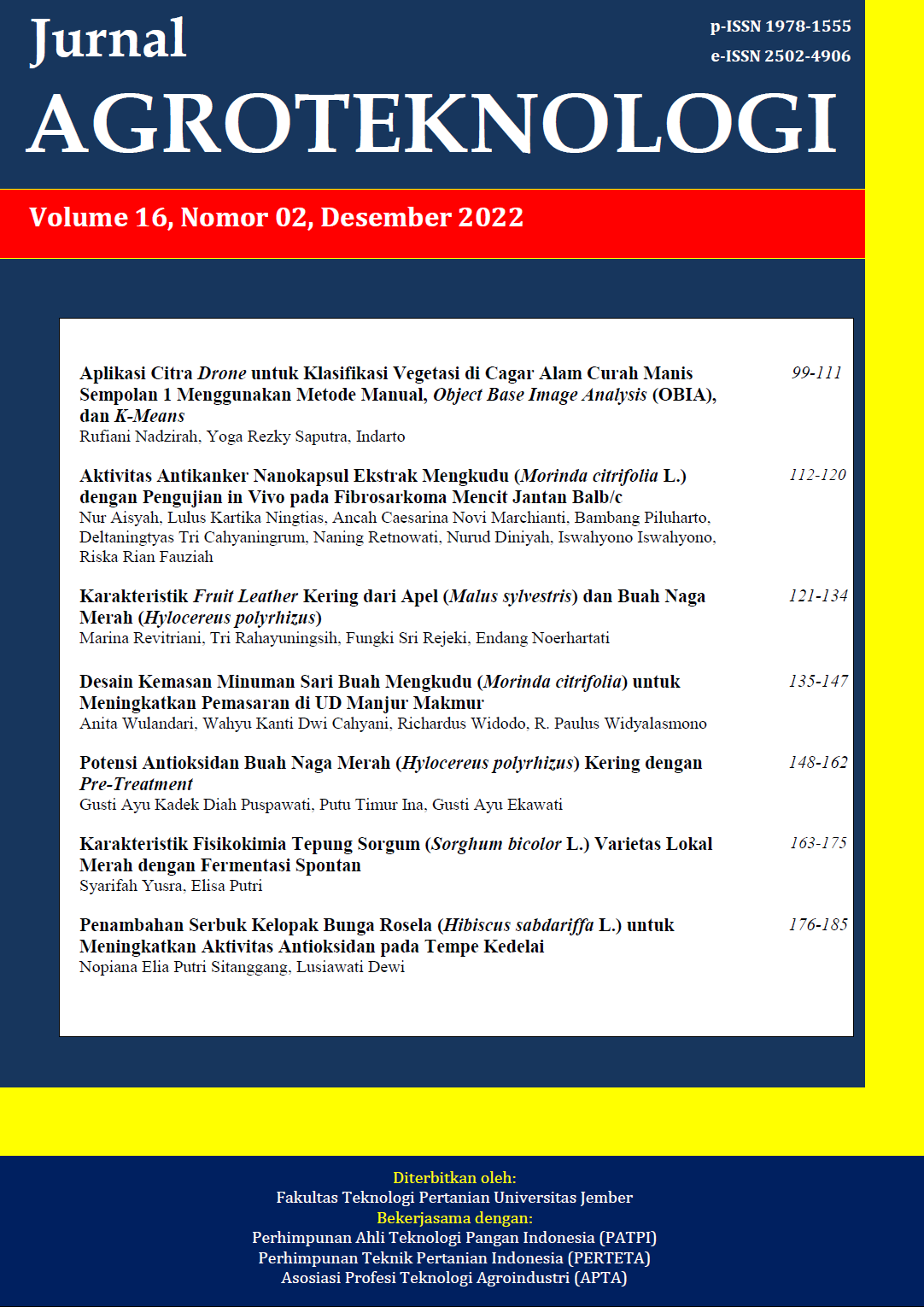Karakteristik Fruit Leather Kering dari Apel (Malus sylvestris) dan Buah Naga Merah (Hylocereus polyrhizus)
DOI:
https://doi.org/10.19184/j-agt.v16i02.27477Abstract
Processing apples into products such as fruit leather is an effort to extend its shelf life, provide added value, easy to distribute, and potentially an export product, but it has an unattractive color, so it needed to combine with red dragon fruit. In addition, fruit leather has water content of 10-20%, so it has a limited shelf life. Therefore, it’s necessary to study dried fruit leather. This study aimed to determine the characteristics of dried fruit leather made from apple and dragon fruit. The experimental design used a randomized block design (RBD) with two factors, i.e. proportion of apples and red dragon fruits (75%:25%, 50%:50%, 25%:75%) and citric acid concentration (0%, 0.1%). The combination of those treatments was conducted in triplicate. Elasticity, tensile strength, L*a*b color, water content, total sugar, and vitamin C were parameters observed of the dried fruit leather. Sensory testing used a rank test of taste, color, texture, and aroma preferences. The data were analyzed by ANOVA (α=5%). If there was a difference, Duncan's test was performed. The Friedman test was used to analyze organoleptic test data. The results showed that there was an interaction between treatments on each parameter and between the treatments of the panelists' preference for the color and texture of the dried fruit leather. The characteristics of dried fruit leather have ranges of elasticity 13.00–33.00%, tensile strength 1.2–3 N, water content ranges from 1.3–5.3%, total sugar ranges from 67.30–71.70%, and vitamin C ranges from 50.00 mg/100g–94.00mg/100g. Brightness values ​​(L) range from 29.50 to 31.40, a* values ​​range from 12.9 to 17.7(red), and b* values ​​range from -8.2 to -14.8 (blue). Apple and red dragon fruit can make into dried fruit leather, which has a reddish-blue color.
Keywords: apple, citric acid, dragon fruits, dried fruit leather
Downloads
Downloads
Published
Issue
Section
License
Jurnal Agroteknologi has CC-BY-SA or an equivalent license as the optimal license for the publication, distribution, use, and reuse of scholarly work. Authors who publish with this journal retain copyright and grant the journal the right of first publication with the work simultaneously licensed under a Creative Commons Attribution-ShareAlike 4.0 International License that allows others to share the work with an acknowledgment of the work's authorship and initial publication in this journal.









.png)
